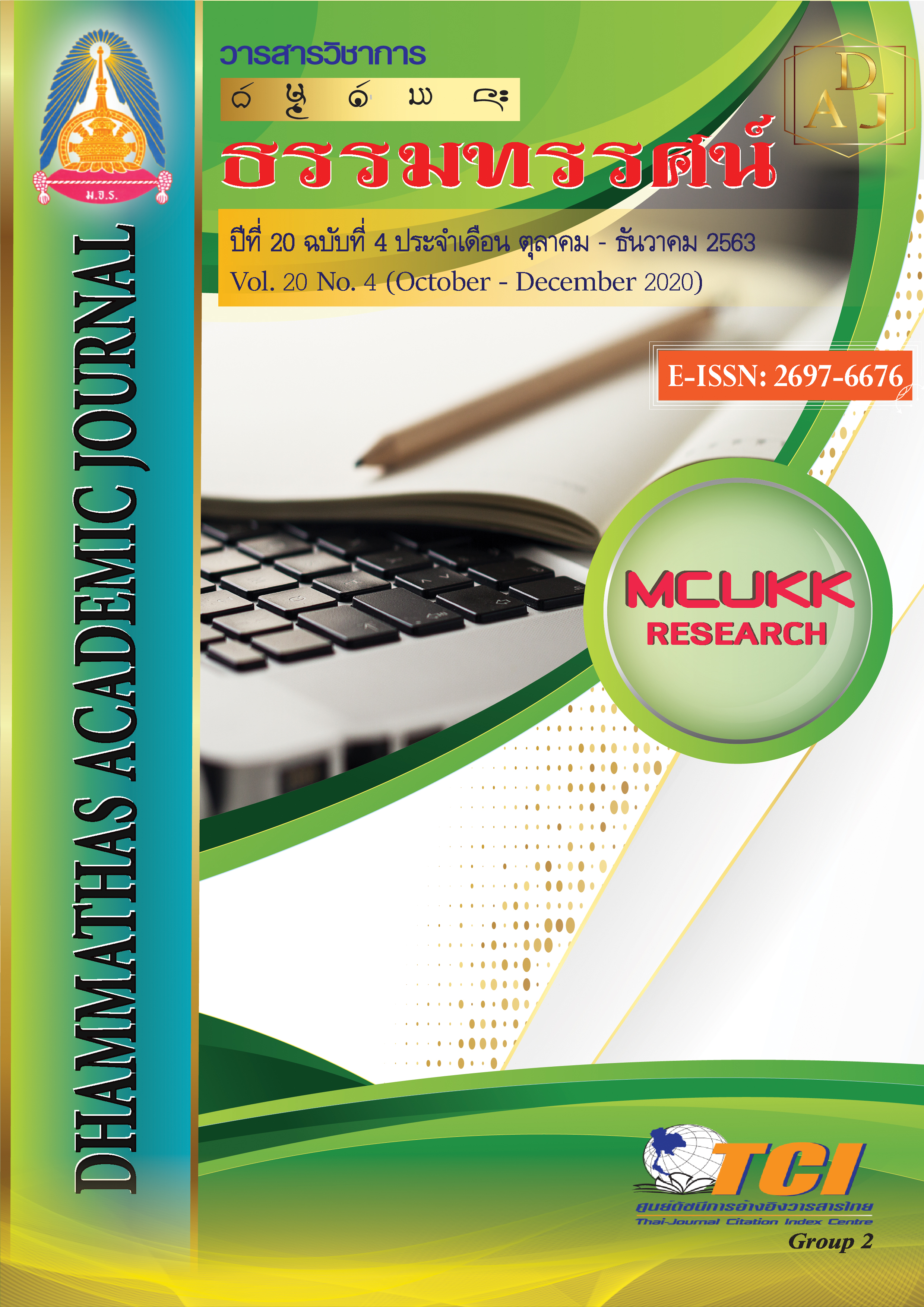The Analysis of Needs in English Speaking Skills and Problems of Navaminda Kasatriyadhiraj Royal Air Force Academy Graduates in Speaking English in the Workplace
Main Article Content
Abstract
This research of objective to: 1) to analyze the needs of graduates of Navaminda Kasatriyadhiraj Royal Air Force Academy (NKRAFA) for speaking English skills for work, 2) to analyze the graduates’ problems of speaking English for work. A quantitative research the sample group was 140 graduates of Navaminda Kasatriyadhiraj Royal Air Force Academy (NKRAFA). The instrument used was a questionnaire with three main sections administered to graduates. They were 1) The need for speaking English for work 2) problems in speaking English for work, and 3) the additional opinions towards needs in speaking English for work. The questionnaire was analyzed using Statistical Package for the Social Sciences. And the additional opinions were analyzed descriptively.
The results revealed that: the graduates could not speak English in different situations effectively. They had limited speaking skills to liaise with foreigners during foreign visits and military missions. The language skills required by the graduates depended on the positions that graduates were appointed. In combat force, the graduates needed skills in liaising with others during military and diplomatic missions. In command department, graduates needed everyday conversational skills, and speaking skills when attending seminars or making a presentation. And in logistics department-such as purchasing weapons and studying the accompanying weapon manuals-they needed negotiation skills as well as reading and translation skills. In terms of problems encountered in speaking English, they had difficulty speaking English in a variety of situations. They lacked confidence when speaking English due to pronunciation problems and limited vocabulary.
Article Details
References
Brown, J. D. (1995). The elements of language curriculum: a systematic approach to program development. Boston MA : Heinle & Heinle.
Brown, J. D. (2016). Introducing Needs Analysis and English for Specific Purposes. New York : Routledge.
Bygate, M. (1987). Speaking: The Cambridge guide to teaching English to speakers of other Language. Cambridge : Cambridge University Press.
Celce-Murica, M. (2001). Teaching English as a second language or foreign language (2nd ed.). New York : Newbury House.
Data Processing Department, Statistics and Evaluation Division. (2016). Users’ Satisfaction Survey Report for the graduates from Navaminda Kasatriyadhiraj Royal Air Force Academy Batch 56th -58th. Bangkok : Division of Statistics and Evaluation, Navaminda Kasatriyadhiraj Royal Air Force Academy.
Dudley-Evans, T. & St. John, M. J. (1998). Developments in English for Specific Purposes. Cambridge : Cambridge University Press.
Efrizal, D. (2012). Improving students’ speaking through communicative language teaching method at MTs J-AlhagSentot All Basa Islamic boarding school of Bangkulu, Indonesia. International Journal of Humanities and Social Sciences, 2(20), 127-134.
Gilakjani, A. P. (2012). A Study of Factors Affecting EFL Learners' English Pronunciation Learning and the Strategies for Instruction. International Journal of Humanities and Social Science, 2(3), 119-128.
Gower, R., Phillips, D. & Walters, S. (1995). Teaching practice handbook. Oxford : MacMillan Education.
Homolova, E. (2004). Creative Approach to Authentic Materials in ESL. http://www.eslteacherboard.com/Authenticintro.htm (Accessed 6 June 2020).
Hosni, S. (2014). Speaking difficulties encountered by young EFL learners. International Journal on Studies in English Language and Literature (IJSELL), 2(6), 22-30.
Hutchison, T. & Waters, A. (1987). English for Specific Purposes: a learner-centred approach. Cambridge : Cambridge University Press.
Isani, S. (2013). Brian Paltridge, Sue Starfield (eds.), The Handbookof English for Specific Purposes. Boston : Wiley-Blackwell.
Kayi, H. (2007). Teaching Speaking: Activities to Promote Speaking in a Second Language. http://www.unr.edu/homepage/hayriyek (Accessed 6 June 2020).
Kenny, N. (2016). Is there a Specific Method for Teaching ESP?. The Journal of Teaching English for Specific and Academic Purposes, 4(2), 253-260.
Kim, H. (2013). Needs Analysis for English for Specific Purpose course Development for Engineering Students in Korea. International Journal of Multimedia and Ubiquitous Engineering, 8(6), 279-288.
León, W. U. & Cely, E. V. (2010). Encouraging Teenagers to Improve Speaking Skills through Games in a Colombian Public School. PROFILE, 12(1), 11-31.
Leong, L. & Ahmadi, S.M. (2017). An Analysis of Factors Influencing Learners’ English Speaking Skill. International Journal of research in English Education, 2(1), 34-41.
Martinez, A. G. (2002). Authentic Materials: An Overview. http//:www.telus.net/linguisticsissues/authenticmaterials.html (Accessed 6 June 2020).
Mora, R. A. & Lopera, M. C. (2001). Games in the classroom: More than just having fun. HOW-A Colombian Journal for Teachers of English, 8(-), 75-82.
Nillo, J. (2014). Factors Affecting Speaking Skills. http://www.slideshare.net/joalexnillo/facots-affecting-speaking-skills (Accessed 6 June 2020).
Nunan, D. (2003). Practical English Language Teaching. New York : McGraw-Hill Company Inc.
Sanderson, P. (1999). Using newspapers in the classroom. Cambridge : Cambridge University Press.
Tuan, N. H. & Mai, T. N. (2015). Factors Affecting Students’ Speaking Performance at LE Thanh Hien High School. Asian Journal of Educational Research, 3(2), 8-23.

